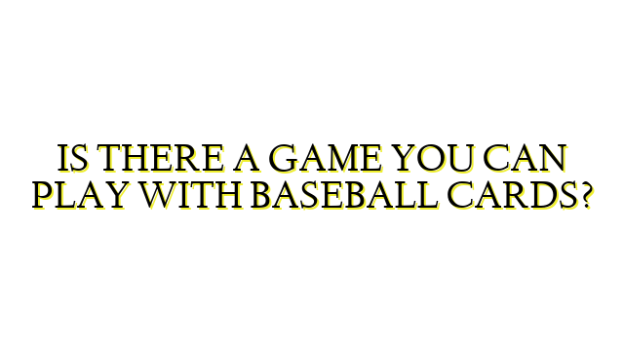War is one of the most basic and popular games that can be played with baseball cards. To play, each player flips over one card at a time from the top of their stacked pile of cards and places it face up. The player with the card featuring the player with the higher baseball stats (such as batting average, home runs, wins, etc) keeps both cards. This continues until one player has no cards remaining. Variations include calling out “war” before flipping, in which case both players flip three cards instead of one.
Another classic baseball card game is called Payoff. This is played with one deck of cards. Players take turns drawing cards from the deck one at a time. Numbers on the cards correspond to different batting stats – for example, aces are singles, twos are doubles, threes are triples, fours are home runs. Other cards indicate outs. Drawn cards are placed face up in a pile. The object is to get runners (cards) “home” before making three outs. Runs are scored when cards are reached/drawn that allow the previous runners to score. The player who scores the most runs from their drawn cards wins.
High five is a variation on the game 21. Players flip cards face up one at a time trying to get playing cards that total 21 or less using the baseball stats on the flipped cards. For example, a card with a player that hit .280 batting average could count as 2, a card with 12 home runs counts as 12, etc. If the running total goes over 21, the player is “out”. Play continues until one player stays “in” the longest. For an added element of chance, jokers or wildcards can be included that count as any stat of the player’s choosing.
Topps Baseball is a popular strategic board game played with Topps baseball cards. Players aim to build the best virtual baseball team by “drafting” cards representing real baseball players. The board represents different positions on a baseball diamond, and cards are played to those spaces. Higher stats are important, as is balancing offensive strengths and defensive strengths. An element of trading cards is included. The player who builds the team with the highest overall stats at the end of the game is the winner.
Pitch is a two-player game that focuses on simulated pitching and batting. One player has a stacked “pitching hand” of cards facedown while the other has cards as their “batting hand” displayed face up. Play involves one player drawing a card from their hand to “pitch” while the other tries to match or beat the stats on the card with their face-up “batter” cards. Successful matches score runs while failures result in outs. First player to score 21 runs or have the opponent strike out three times wins.
There are countless more variants that can be devised by players as well. Combining cards into hands and taking turns matching stats adds strategic elements to the largely chance-based games like War. Including specific card types like wildcards or “position” cards allows for more nuanced rulesets. Grouping cards by player attribute instead of team is another option. Through creative adaptations of basic rules and customized scoring systems, baseball cards continue to provide enjoyment for collectors across generations. Their portability and wide variety of real-life player and statistical information embedded on the cards fuel children and adults’s imagination for simulated on-field competition, strategy, and team-building play for decades after their original production and distribution.

